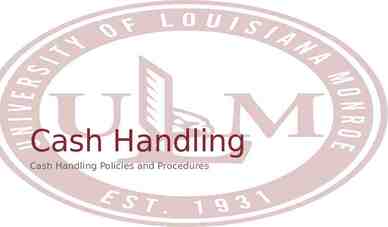The Great Gatsby Historical Background and Literary Information “It
43 Slides5.40 MB

The Great Gatsby Historical Background and Literary Information "It was an age of miracles," Fitzgerald wrote of the Jazz Age. “It was an age of art, it was an age of excess, and it was an age of satire.

Review of Time Periods Puritan/Age of Reason View of God: All Sovereign Man is depraved Predestination Pray for perfection Theocracy Man is good God in man Romanticism/Realism Man is divine God in nature Irony God is detached Fate unpredictable Nature is violent at times Modernism disillusioned – no spiritual connection Lost generation

World War I World War I ended in 1918. Disillusioned because of the war, the generation that fought and survived has come to be called “the lost generation.”

The Roaring Twenties While the sense of loss was readily apparent among expatriate American artists who remained in Europe after the war, back home the disillusionment took a less obvious form. America seemed to throw itself headlong into a decade of madcap behavior and materialism, a decade that has come to be called the Roaring Twenties.

The The Jazz Age era is also known as the Jazz Age, when the music called jazz, promoted by such recent inventions as the phonograph and the radio, swept up from New Orleans to capture the national imagination. Improvised and wild, jazz broke the rules of music, just as the Jazz Age thumbed its nose at the rules of the past.

The New Woman Among the rules broken were the ageold conventions guiding the behavior of women. The new woman demanded the right to vote and to work outside the home. Symbolically, she cut her hair into a boyish “bob” and bared her calves in the short skirts of the fashionable twenties “flapper.”

Gambling Another gangland activity was illegal gambling. Perhaps the worst scandal involving gambling was the so-called Black Sox Scandal of 1919, in which eight members of the Chicago White Sox were indicted for accepting bribes to throw baseball’s World Series.

The Automobile The Jazz Age was also an era of reckless spending and consumption, and the most conspicuous status symbol of the time was a flashy new automobile. Advertising was becoming the major industry that it is today, and soon advertisers took advantage of new roadways by setting up huge billboards at their sides. Both the automobile and a bizarre billboard play important roles in The Great Gatsby.

The 1920s – The Jazz Age Fitzgerald himself coined the term Reaction to the death/destruction/loss of innocence from WWI (post-war prosperity) During this time, there was a mass migration from rural areas to cities where “parties were bigger, the pace was faster, the buildings were higher, the morals looser” (Fitzgerald) Some called it the first truly modern decade Louis Armstrong and Duke Ellington were popular musicians of the day Dances like the Charleston, the Shimmy, and the Toddle were popular ( http://www.youtube.com/watch?v yNA OHtmy4j0 )

Prohibition Another rule often broken was the Eighteenth Amendment to the Constitution, or Prohibition, which banned the public sale of alcoholic beverages from 1919 until its appeal in 1933. Speak-easies, nightclubs, and taverns that sold liquor were often raided, and gangsters made illegal fortunes as bootleggers, smuggling alcohol into America from abroad.

PROHIBITION 1920-1933 – sale of alcohol was prohibited in the United States; mandated by Constitutional amendment Meant to improve lives of Americans (faith-driven initiative) Instead, liquor consumption grew exponentially Created criminals (lots of to be made) – Gatsby? Speakeasies were the places to consume liquor (bars)

Women’s fashion of the 1920s

Men’s fashion of the 1920s

F. Scott Fitzgerald Born September 24, 1896 Died December 21, 1940 Only son of an “aristocratic father” and “energetic mother” – named after Francis Scott Key, a relative of his father’s Went to private schools and attended college at Princeton Leading figure in a dramatic society, The Triangle Club Neglected his studies – flunked out and joined the army

F. Scott Fitzgerald Met his wife, Zelda, while stationed in Alabama She refused to marry him due to his lack of success 1920 - published his first novel This Side of Paradise – it made him famous! Zelda agreed to marry him Called the “prince and princess” of the generation The couple had a daughter, Scotty, in 1921

F. Scott Fitzgerald The family moved to the French Riviera Wrote Gatsby there Part of a group of ex-pats that included Ernest Hemmingway In 1930, Zelda had the first of several mental breakdowns Sent to sanitarium in Switzerland; she spent the rest of her life in both inpatient and outpatient care The couple returned to America for good in 1931

F. Scott Fitzgerald Although Fitzgerald was a famous author, the couple spent the money much faster than he earned it. 1935-37 is known as the “crack up” in Fitzgerald life Decent into alcoholism In debt Unable to be a present father for Scotty (sent to boarding schools) Fitzgerald went to Hollywood in 1937 to try his luck at screenwriting He won a substantial contract with MGM, but still wasn’t financially viable due to his debt Met and fell in love with Sheilah Graham Fitzgerald died of a heart attack in Graham’s apartment in 1940 Zelda died in a fire in 1948

Novels Magazines, Newspaper Short Stories This Featured Side of Paradise (1920) The Beautiful and the Damned (1922) The Great Gatsby (1925) Tender is the Night (1934) The Last Tycoon (unfinished) in Esquire, The Saturday Evening Post All the Sad Young Men (best collection of short stories) Famous Works

The Great Gatsby Characters Nick Carraway - narrator Jay Gatsby – a pun on the slang term gat (pistol) Tom & Daisy Buchanan – “old” Jordan Baker – based off Edith Cummings, 1923 women’s golf champion; combines two car names – the sporty Jordan and conservative Baker Electric George & Myrtle Wilson – Tom’s mistress and her husband; live in the valley of ashes Meyer Wolfshiem – based on Arnold Rothstein, a real-life gangster

Jay Gatsby The title character. Jay Gatsby is a former mid-westerner who moved East in order to win over Daisy Buchanan, the love he lost five years earlier. His desire to win over Daisy leads him from poverty to extreme wealth. He is considered “new money.”

Nick Carraway The novel’s narrator. Nick is also a mid-westerner who moved East. He happens to be Daisy’s cousin. Nick happens to move to a small house next to Gatsby’s mansion in West Egg. His mid-western sensibilities give us an outsiders perspective on how the wealthy socialites like the Buchanans lead their lives.

Daisy Buchanan Daisy is beautiful and “delicate”. Gatsby is obsessed with winning Daisy back. Even the sound of her voice he finds absolutely mesmerizing. She grew up in a wealthy and privileged family. She married a very wealthy man, Tom Buchanan, who is considered part of the “old money” elite.

Tom Buchanan Daisy's hulking brute of a husband. Tom comes from an old, wealthy Chicago family and takes pride in his rough ways. He leads a life of luxury in East Egg, playing polo, riding horses, and driving fast cars. He commands attention through his wealth, physical size, and obnoxious behavior.

Jordan Baker Professional golfer known for her questionable integrity. A friend of Daisy’s, she also represents women of this elite social class. She is used to being admired by women wherever she goes. Fitzgerald often wrote about athletic women who played sports such as golf or tennis. This was considered very modern at

Meyer Wolfshiem Gatsby's business associate and link to organized crime. A professional gambler, Wolfshiem is attributed with fixing the 1919 World Series.

George and Myrtle Wilson A local auto mechanic mistress) George’s wife (Tom’s

The Great Gatsby Setting The East and West Eggs – fictionalized peninsulas on Long Island Sound East Egg – representative of “old money”; Tom and Daisy live here West Egg – the newly rich live here – not quite accepted into the folds of the old moneyed; Gatsby’s mansion is here

The Great Gatsby Setting Gatsby’s mansion: set on 40 acres; colossal, flashy, garish Symbolic of Gatsby’s success and the “American Dream” Also symbolic of the hollowness of money, success Serves as Gatsby’s lure for Daisy

The Great Gatsby Setting Valley of Ashes - where George and Myrtle live Considered to be Flushing, in Queens, NYC Dead, gray, powdery People passed through the area in cars and on trains on their way to and from Manhattan

The Great Gatsby Setting New York City and Plaza Hotel – symbolizes excess of the times Where much of the irresponsibility (adultery) and excess (drunkenness) of the novel take place

The Great Gatsby Symbols The green light at the end of Buchanan’s dock Gatsby’s library/books Dr. T.J. Eckleburg’s eyes on the billboard Owl Eyes Valley of Ashes East Egg/West Egg

Symbols in The Great Gatsby Green Lightat the end of Daisy’s dock and visible from Gatsby’s mansion. Represents Gatsby's hopes and dreams about Daisy.

Symbols in The Great Gatsby The Valley of Ashesthe area between West Egg and New York City. It is a desolate area filled with industrial waste. It represents the social and moral decay of society during the 1920’s. It also shows the negative effects of greed.

Symbols in The Great Gatsby The Eyes of Dr. T. J. EkleburgA decaying billboard in the Valley of Ashes with eyes advertising an optometrist. There are multiple proposed meanings, including the representation of God’s moral judgment on society.

Important Quotes “I hope she’ll be a fool- that’s the best thing a girl can be in this world, a beautiful little fool.” - Daisy’s description of her daughter “So we beat on, boats against the current, borne back ceaselessly into the past.” –the last line of the novel

Important Quotes "They were careless people, Tom and Daisy- they smashed up things and creatures and then retreated back into their money or their vast carelessness or whatever it was that kept them together, and let other people clean up the mess they had made." – Nick’s description of Tom and Daisy

The Great Gatsby Motifs Money Hypocrisy Friendship Carelessness Dishonesty The American Dream Cars/Driving Ashes/Dust Time/Clocks Colors: green, white, yellow, silver, gold

WHAT IS THE AMERICAN DREAM? It describes an attitude of hope and faith that looks forward to the fulfillment of human wishes and desires. “We hold these truths to be self-evident, that all men are created equal, that they are endowed by their creator with certain unalienable rights, that among these are life, liberty, and the pursuit of happiness.”

The American Dream Gatsby is the ideal image of one who has achieved the American Dream. What is the American Dream and who has achieved it in our time?

Old Money Vs. New Money Old Money New Money Money Someone from who family has achieved wealth the American Born rich Dream Not as respected in the 1920’s earned through work done by yourself Respected above all in the 1920’s

Pre-Reading: 1.Why are we still reading a book written in the 1920’s? What gives a book its longevity? 2.How was the 1920’s a reaction to WWI? 3.Some people think that having money leads to happiness. Do you agree? Why or why not? What are the advantages or disadvantages of being wealthy. 4.What is the "American Dream"? Where did it originate, and how has it changed over the centuries? 5.Have you ever wanted to relive a moment from your past, to redo it? Describe the situation. How and why would you change the past?








